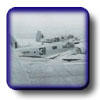Edward Bryce Chase
Edward Bryce Chase was born in North Battleford, Saskatchewan
in 1923. After joining the RCAF, he underwent elementary
flying at No. 16 Elementary
Flying Training School (EFTS) in Edmonton, and then No. 7 Service Flying Training School
(SFTS) in Macleod, Alberta. He would eventually be posted
to Southeast Asia where he flew transport operations.
In this excerpt, Edward Bryce Chase recalls the events that
occurred before being posted for aircrew
training, and describes some of the rigours of guard duty
on the Canadian Prairies.
 Shortly
after my 18th birthday on June 6, 1941, I applied to
join the Royal Canadian Air Force (RCAF). On August 8, I was enrolled for aircrew.
Shortly thereafter, I arrived at No. 2 Manning Depot in
Brandon. My diary records that, after many needles, much
drill instruction, classes on what makes the Air Force tick,
and being equipped with uniforms, I was posted to an
aircrew
holding unit at No. 37 Bombing and Gunnery school at Paulson
(near Dauphin), Manitoba. Shortly
after my 18th birthday on June 6, 1941, I applied to
join the Royal Canadian Air Force (RCAF). On August 8, I was enrolled for aircrew.
Shortly thereafter, I arrived at No. 2 Manning Depot in
Brandon. My diary records that, after many needles, much
drill instruction, classes on what makes the Air Force tick,
and being equipped with uniforms, I was posted to an
aircrew
holding unit at No. 37 Bombing and Gunnery school at Paulson
(near Dauphin), Manitoba.
At Paulson, I had a variety of duties, which included stoking
wood-burning heaters in all the barrack blocks, shovelling
coal into the hoppers of furnaces that heated the hangars,
putting fuses into 11-1/2-pound practice bombs and loading
30-calibre cartridges into pans to be fired by air gunner
trainees learning to fire the Vickers machine gun...
On December 20, I was posted to No. 32 Service Flying
Training School (SFTS) at Moose Jaw,
Saskatchewan to do guard duty. This consisted of patrolling
one of two "beats" inside the fence "to
prevent saboteurs from destroying military property."
It soon became evident that no saboteur in his right mind
was going to face the bitter winter weather in Southern
Saskatchewan to destroy some Harvard training aircraft. As
a result, a good deal of guard duty was served
in the furnace rooms of aircraft hangars.
There were, however, two notable exceptions. Very late one
night a Royal Air Force (RAF) airman arrived at the fence, well beyond the
hour that he should have returned to camp. Fearing arrest,
he was trying to climb over the perimeter fence some distance
from the guard house. In his inebriated state, he was unable
to negotiate the barbed wire protruding outward at the top
of the fence. By shoving my rifle through the fence near
the top, he was able to step on it and clamber over without
risking his trousers and/or his "private parts"
and being put on charge.
On the other occasion, the Sergeant in charge of the guards
ventured out one very cold night to see if we were doing
our duty. Being bitterly cold, I had gone into the
hangar
to warm up. Suddenly, that "second sense" that
has protected me throughout my life, warned me to get back
out on my beat. Alas, the Sergeant had passed the hangar and was headed down towards the far end of my patrol area.
Happily, the snow was cold and crunchy, and by taking much
longer steps but keeping in step with him, I was able to
catch up before he reached my sentry box. As he was about
to turn around, I shouted "Halt, Who Goes There."
I must have about frightened the life out of him, for he
never appeared again while I was at Moose Jaw.


|
 Heritage Community Foundation Presents
Heritage Community Foundation Presents Heritage Community Foundation Presents
Heritage Community Foundation Presents